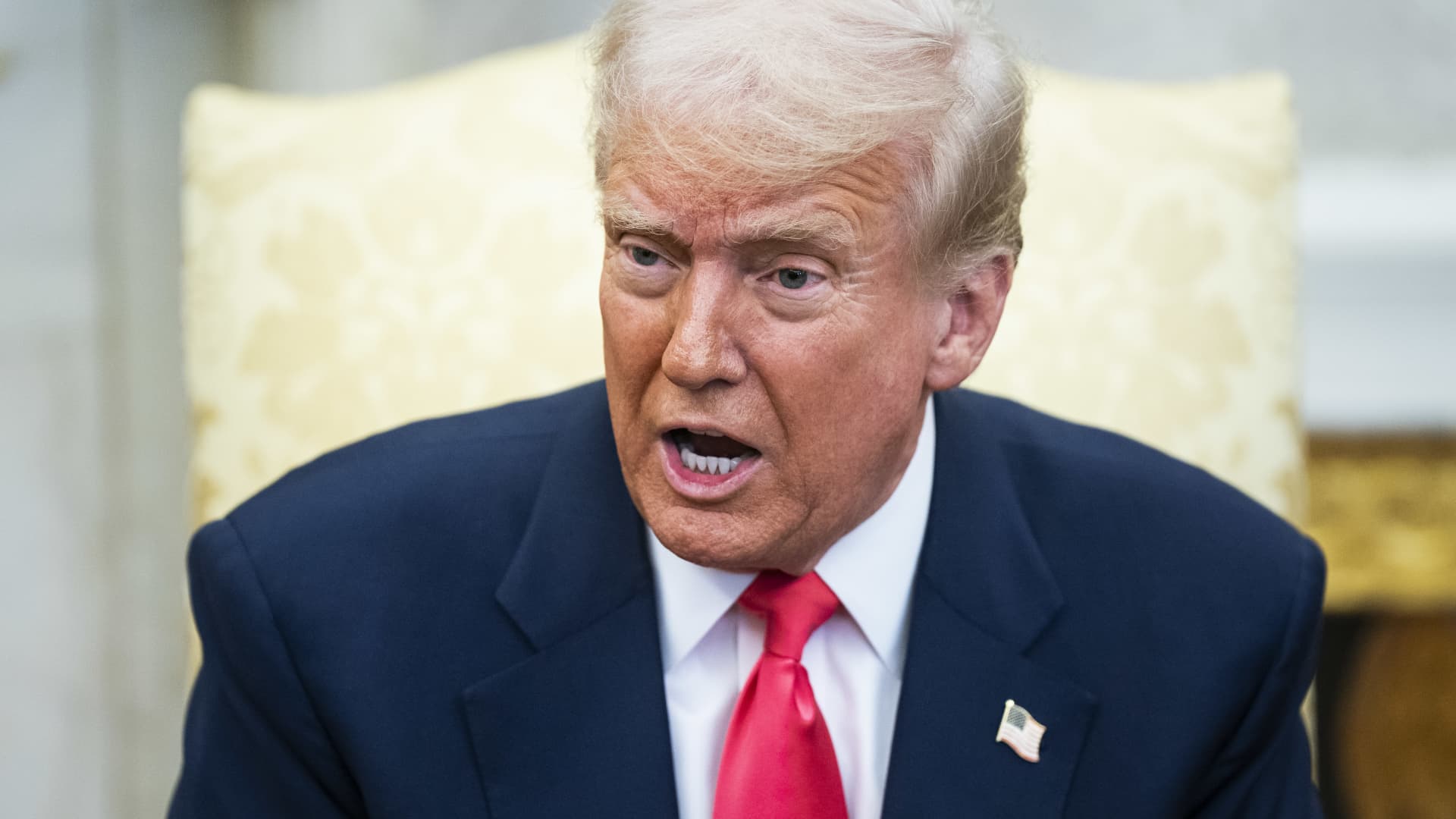Washington, DC – March 12 : President Donald J Trump meets with Ireland’s Prime Minister Michael Martin in the Oval Office at the White House on Wednesday, March 12, 2025 in Washington, DC.
Jabin Botsford | The Washington Post | Getty Images
Stock futures fell early Wednesday, as investors braced for the rollout of President Donald Trump’s tariffs set to take effect shortly after midnight Wednesday. The S&P 500 was inches away from a bear market, under pressure in recent days from the worst selling since the outbreak of the pandemic in 2020.
Futures tied to the Dow Jones Industrial Average dropped 583 points, or 1.54%. Nasdaq-100 futures declined 1.21%, while S&P 500 futures pulled back 1.53%.
Anxiety around the rollout of the tariffs, which Trump announced late last Wednesday, have fueled a four-day rout for stocks. The volatility continued on Tuesday, with the S&P 500 up more than 4% at one point before ending the day with a loss of 1.6%. The 30-stock Dow climbed 3.9% at its high for the day but ultimately fell 0.8% at the end of trading. The broad market index is nearly 19% off its record high.
Over the course of four days, the Dow has lost more than 4,500 points, while the S&P 500 has sustained a 12% loss. The Nasdaq Composite is down more than 13% in that period.
Tech giant Apple has suffered keenly in that period, with the iPhone manufacturer expected to see higher costs with incoming China tariffs. Shares have dropped nearly 23% in the past four days, marking Apple’s worst stretch of that length since October 2000.

The S&P 500 over the past five trading days.
Investors could be in for another roller-coaster ride as a raft of tariffs takes effect on Wednesday just after midnight. These duties include an anticipated 104% levy on Chinese imports. Customs will begin collecting new tariffs on imports from 86 nations.
Certain affected countries are poised to strike back, with Canada reconfirming Tuesday its plans to put into effect 25% retaliatory tariffs on U.S.-made vehicles, expected to take effect after midnight Wednesday. This includes vehicles that aren’t compliant with the United States-Mexico-Canada Agreement, in addition to non-Canadian and non-Mexican content of USMCA-compliant fully assembled vehicles brought into Canada from the U.S.
“Our base case is tariffs will, over time, drift lower than today’s level but stay off the charts – at the highest levels of our lifetimes,” Piper Sandler analyst Andy Laperriere wrote on Tuesday. “They are more likely to go higher in the near-term, though there could be some deals (probably minor ones) in the near term, too.”
Aside from the tariff rollout, investors will keep an eye on the Federal Reserve’s meeting minutes, due Wednesday.





